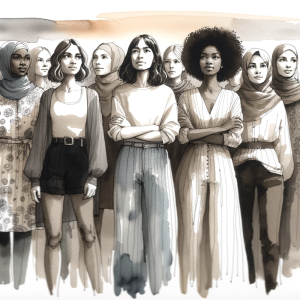
Circus Acts and Webinars in Healthcare Education
Let’s be upfront. This is a weird one.
Healthcare research is pivotal for advancing medical practices and informing policy decisions. However, the journey from research to real-world application is fraught with challenges. Traditional methods of knowledge translation (KT), such as webinars and reports, have been the backbone of disseminating scientific findings. Yet, they often fall short in making complex healthcare issues accessible and engaging to a diverse audience. A recent study published in PLoS ONE explores a novel approach—arts-based knowledge translation (ABKT), using a circus show to convey scientific data. Let’s delve into why this innovative method might be the key to unlocking more effective healthcare communication.
The Study: Circus vs. Traditional KT Methods
The study, conducted by Théberge et al., compared the effects of three different KT interventions—a circus show, a webinar, and a research report—on awareness, engagement, and policy influence concerning healthcare services in Quebec’s rural areas. With 162 participants randomly assigned to each intervention, the study aimed to gauge which method was most effective across various metrics, including accessibility, engagement, enjoyment, and advocacy influence.
Key Findings: A Juggling Act of Information
Interestingly, the circus show outshone the other methods in terms of accessibility and enjoyment. It performed on par with traditional methods for raising awareness and increasing engagement. This suggests that integrating arts into KT can break down barriers to understanding complex issues by providing a more relatable and engaging format. Participants reported a higher retention of information and a greater emotional connection to the content presented through the circus performance.
Why the Circus Show Worked
- Engagement Through Entertainment: The use of circus arts to present research findings captivated the audience’s attention far more effectively than static webinars or text-heavy reports.
- Emotional Connection: The theatrical elements of the circus—music, lighting, performance—created a memorable experience that resonated on an emotional level, enhancing the audience’s connection to the information.
- Accessibility: The visual and dynamic nature of the circus made complex scientific information more accessible to people of various educational backgrounds and learning styles.
Visual Aids and Learning
The study underscores the importance of visual aids and engaging content in education. Figures from the research, such as graphs and images from the circus show, highlighted how art and performance could vividly illustrate statistical data and research outcomes, making them more comprehensible for the general public.
Challenges and Considerations
Despite its success, employing ABKT, particularly a circus show, comes with its own set of challenges. High production costs, the need for artistic and scientific collaboration, and the logistical demands of staging a live performance are significant barriers. However, the potential for such approaches to make a lasting impact on public health awareness and policy makes them worth exploring.
The Future of KT: Balancing Act Between Art and Science
This study opens the door to rethinking how we share and implement scientific knowledge. By blending the arts with science, researchers can engage a broader audience, foster greater understanding of complex issues, and potentially accelerate the application of research findings into practice.
Join the Movement of Health Innovators – Subscribe for Weekly Insights!
Step into the forefront of public health innovation with ‘This Week in Public Health.’ Every edition brings you closer to the latest developments in research, community health, and advocacy. It’s more than a newsletter – it’s your resource for becoming an informed and active participant in the health community. Subscribe for free and join a network of individuals dedicated to making a lasting impact in public health!
About the Author
Jon Scaccia, with a Ph.D. in clinical-community psychology and a research fellowship at the US Department of Health and Human Services with expertise in public health systems and quality programs. He specializes in implementing innovative, data-informed strategies to enhance community health and development. Jon helped develop the R=MC² readiness model, which aids organizations in effectively navigating change.



